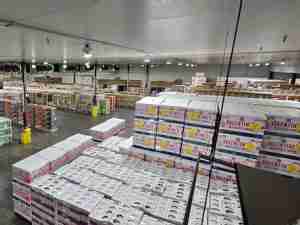Wuhan University of Technology partners with Navis to utilize MACS3 and Stowman software
posted by AJOT | Apr 26 2017 at 07:48 AM | Logistics
University provides students with access to best-in-class ship loading computer and stowage planning software for critical job training
Wuhan University of Technology (WUT), one of China's leading universities, has partnered with Navis to implement the MACS3 ship loading computer and the Navis StowMan stowage planning program as educational software. In the future, prospective nautical officers will learn loading and unloading operations for container ships and bulk carriers in the segment of 76,000 dwt to 300,000 dwt (very large ore carrier), with on-board planning support provided by the MACS3 stability program from Navis. In addition, students will use the shore-side stowage planning software, StowMan, to learn about the stowage optimization of containers on ships.
"For more than 60 years, Wuhan University of Technology has pursued its goal of training students at the highest level of excellence, thereby focusing particularly on practical orientation,” said professor Yang from the School of Navigation at WUT. “We have trained over 400,000 engineers & technicians and we look forward to being able to offer the global benchmark for education on cargo management in seagoing transport; providing future generations of nautical officer with access to Navis’ internationally recognized loading computer and stowage planning software."
The on-board loading computer MACS3 covers a wide range of calculations relating to hydrostatics, intact and damage stability, as well as the ship's longitudinal strength. The delivery scope of the educational licenses includes the conventional ship-type modules specific to container ships, bulk carriers and multi-purpose vessels, as well as the anonymized data from varying ship types, which are in active service.
Included in the scope of delivery of the stowage planning software are three container ship profiles – of the classes 4,250 TEU, 8,530 TEU and 10,000 TEU – based on ship profiles which belong to the fleet of the largest Chinese shipping companies that currently utilize the MACS3 program on board. Developed from the MACS3 software, it offers integration of the loading computer and StowMan, thus providing ship data pertaining to stability, hydrostatics and the securing of loads during the stowage planning process in real time, a key strength of both programs.
The MACS3 loading computer software has been in use for training purposes since 1999. Initially only available to German naval schools – such as the universities of Wismar and Flensburg, the state naval academy in Cuxhaven, the college of Emden/Leer and Jade University of Applied Sciences in Oldenburg – it is now also deployed at additional European maritime universities. Following Dalian Maritime University, Wuhan University of Technology is now the second Chinese educational institution to rely on Navis’ educational software.
This increase in demand by universities around the world can be traced back to the widespread distribution of MACS3. On the market since 1994, its stability program – mandatory to have on board since 2005 – has captured a market share of approximately 65 percent in the container segment. Thanks to its loading computer with comprehensive visualizations of different types of cargo and certified by all major classification societies, there has also been increasing demand in multi-purpose ships and bulk carriers.
Shipping companies benefit from the use of the on-board software being applied at universities: "Graduates are well-trained in working with the software and therefore require less on-the-job training to enable them to properly utilize it on board," said Dr. Selke Eichler, responsible for customer management at Navis Carrier Solutions. Furthermore, Selke Eichler stresses the advantages for both universities and students: "The educational institutions boost their overall appeal to incoming classes of students by offering a curriculum with the highest-level of practical relevance, and students in turn become more attractive candidates on the global job market."








